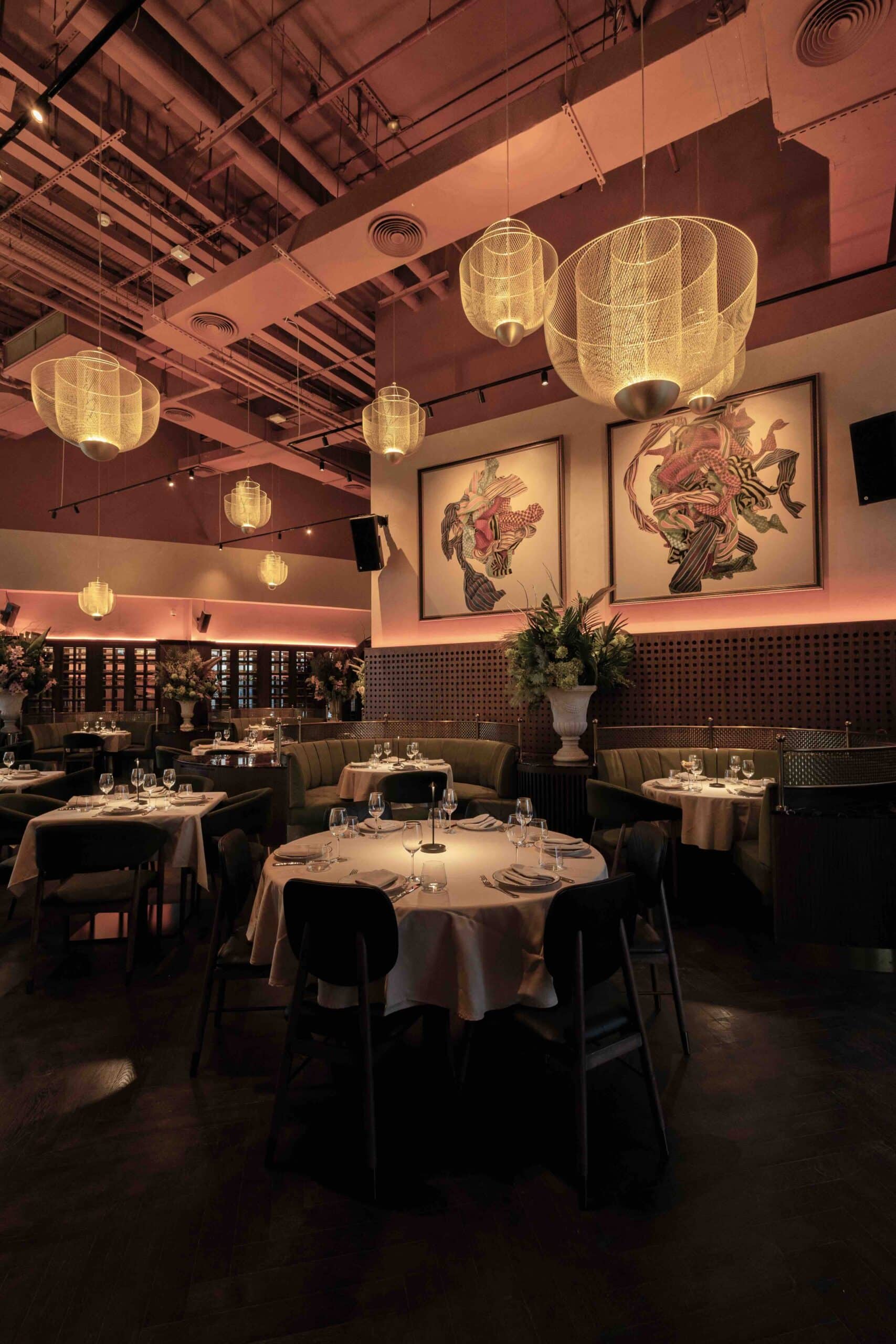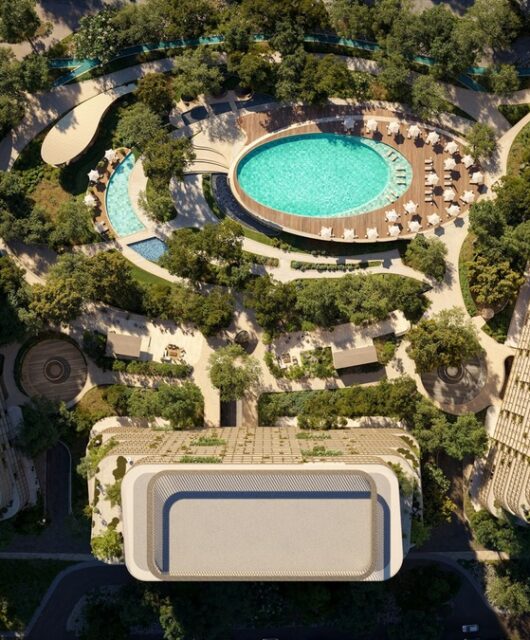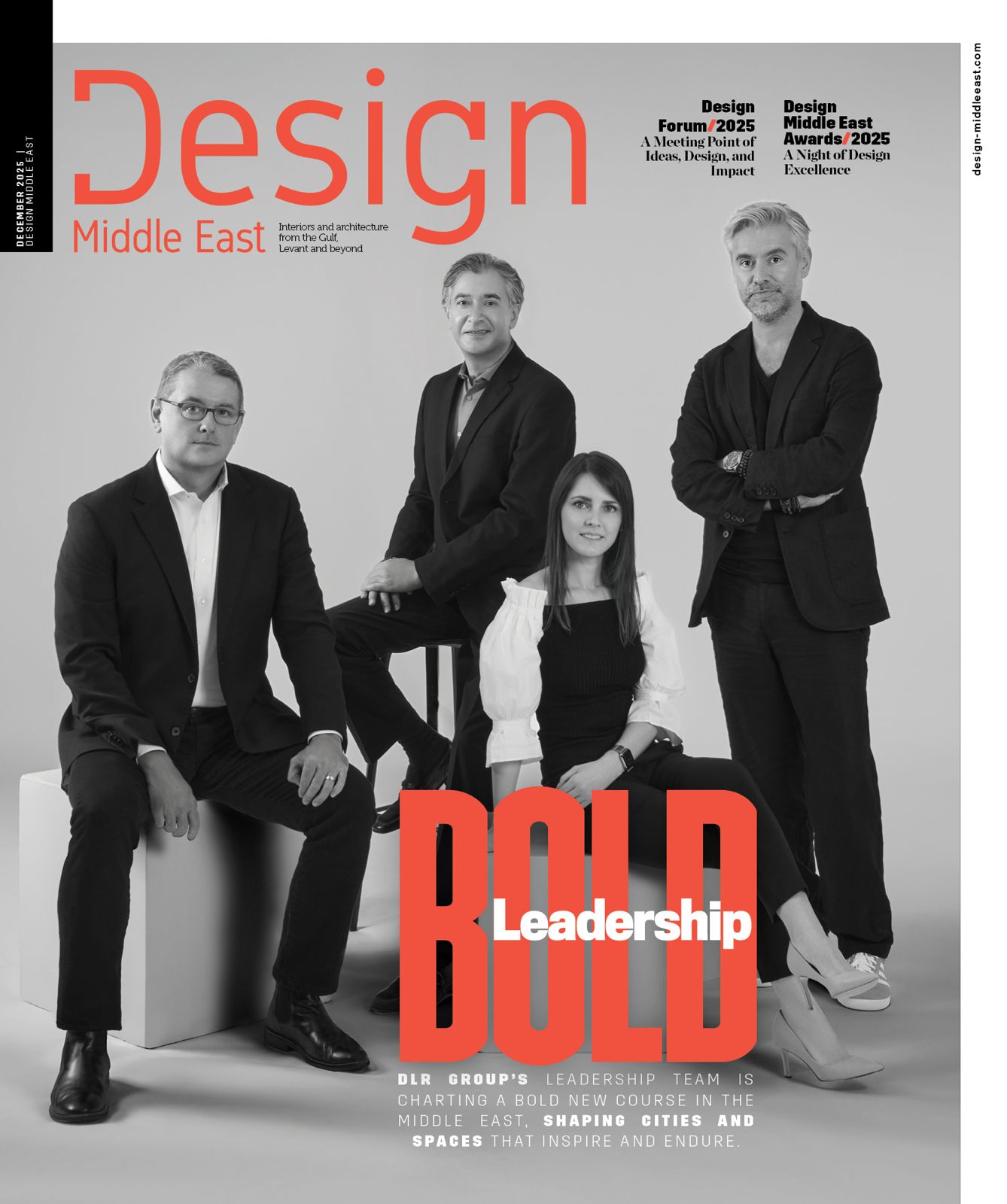Cut to Perfection

Entrepreneur Jason Bassili unveils THREE CUTS on the rooftop of Nakheel Mall, creating a buzz with its bold design and culinary innovation, and setting new standards in Dubai’s hospitality scene.
What inspired the design and aesthetic of the restaurant?
I didn’t want THREE CUTS to be just another steakhouse, I wanted there to be creativity, personality, and soul to it. There are many personal touches incorporated into the aesthetic, largely influenced by my childhood. You’ll find my great-grandmother’s chair in the Speakeasy, and the material surrounding the DJ booth was inspired by my rugby toiletry bag. The Bar’s stained-glass backdrop draws inspiration from my high school church, while the booth seating was inspired by one of our first restaurants in Beirut. I drew a lot of inspiration from my years in London, mixing the traditional steakhouse concept with the vibes of modern hotspots. The design itself inspired our tagline, The Art of Lazy Elegance, creating an aesthetic, where old-school classic meets sophistication and simplicity, all under one roof.
How does the design of the restaurant enhance the dining experience?
THREE CUTS’ design leans into our tagline of The Art of Lazy Elegance; the atmosphere is both grandiose and cozy, casual yet fine. We set a warm tone and ambiance with soft lighting and soulful beats which encourages an extended dining experience. It invites guests to unwind and relax into their home, where there’s no rush to simply eat and go home because you somewhat feel like you’re there. Both
the Bar and the Speakeasy were designed as focal points for the post-dining experience, where people can gather, socialise, entertain, or simply enjoy the vibes. The aesthetic and guest experience were both designed to create a community feel that people sense they are a part of, and keep coming back to.

Are there any sustainable design elements incorporated into the restaurant?
THREE CUTS was designed and constructed on a low power requirement. The venue runs on very efficient power usage, and we use recycled chilled water for all air conditioning. The menu’s one-page concept was designed with sustainability in mind regarding both appearance and offering. When it comes to our food, we are as close to zero waste as can be.
What is the concept behind the restaurant’s menu?
The main goal behind the menu’s concept was to curate a single page constructed around simplicity. We aren’t reinventing the wheel here, the vision was for people to feel as though they were eating at home with simple dishes, but zero compromise on quality. We took the same to sourcing the best ingredients and suppliers, and narrowing
items down. Almost 40 different cuts of meat were sampled to select the best three, and we sourced our highest-quality salmon from Le Fumoir. I wanted to simplify the selection for my guests, rather than produce a multiple-page menu where the concept can get easily lost or confused – we took care of that part for them, playing on the theme of “3” to provide the paradox of choice. We spent months on the process until we produced a very well-focussed menu on one page, every item being something we love to eat ourselves.
Can you tell us about any unique or signature dishes that define your restaurant?
THREE CUTS is an elevated steakhouse experience, so the emphasis is placed on three cuts of meat: Striploin, Tenderloin, and Ribeye. The Chef’s 3 Cut Special expands on this with three additional prime pieces of meat, including the impressive Thor’s Hammer. The Raw Bar is primarily prominent with the Seafood Tower, and Beef Tartare served with lacquered egg yolk. Our concept is simple and is also our signature trait; a one-page menu, high-quality ingredients, and serious flavour. We’ve pulled from both tradition and modernity, pairing the classics with creativity; simple dishes that pay homage to the old-school era, whilst breaking the traditional mould.

What trends in cuisine do you see emerging in the F&B industry and how are you adapting to them?
What stands out most to me is that things are becoming overcomplicated, and slightly saturated. Venues are growing more fussy, eager to be “Instagrammable”, going above and beyond with lights, dry ice, and other exaggerations. In my opinion, it follows one of two ways right now; people are either seeking a simpler form of dining, or they are going for dinner with a show, live entertainment, and so on. All of
this in turn is having an impact on the cost of dining. This was the reason we decided to take things back to a simpler 0me with THREE CUTS, creating a one-page menu, sourcing all the right ingredients and bold flavours, old-school style yet still keeping it up there with entertainment.
How do you manage peak times and ensure smooth service during high traffic periods?
I have operated fine dining restaurants for the past 20 years so there is a lot to pull from the past. Being multi-branded I’ve been very experienced in building teams over time, so we have manned ourselves well to deliver THREE CUTS, which is our latest venture. We crafted a simplified and organised menu that allows us to manage high footfall, and our reservations system sets our maximum flow of guests
per hour, to ensure optimum service at all times. We frequently analyse our guest traffic to better understand our customers, their habits and preferences, and further see how we can improve ourselves.
What role does technology play in your operations, from reservations to kitchen management?
We incorporate technology throughout our entire operations, from the generic systems that handle reservations, point of sales, and so on, to the more specialised ones. Our use of technology plays a vital role in keeping us aligned with our core concept of high quality, assisting with streamlining everything from monitoring inventory, food safety, nutritional aspects, ordering management, and beyond. We
utilise our own internal program for memberships, recognising repeat customers, consumer habits, average spending, reviews, and trends, enabling us to reward our loyal guests. We also use AI software for our music, creating different playlists from lunch, to happy hour, to dinner, ensuring every track played matches the vibe on any given day/time, without repeated songs.
How has the F&B industry evolved in recent years, and what changes do you foresee in the future?
I have been based in Dubai since 2004 and we have seen an erup0on of new concepts all over the city. There are many, many restaurants flooding the market, and whereas before fine dining was geo-located in one certain area, today you can find anything on every side of the city. As Dubai has exponentially grown over the years, so have the communities and neighbourhoods; people are generally dining closer to their local areas to avoid cross-country trips or heavy traffic. I anticipate these trends to keep growing for the meantime as Dubai continues establishing itself as a serious, global, and diverse dining destination.







